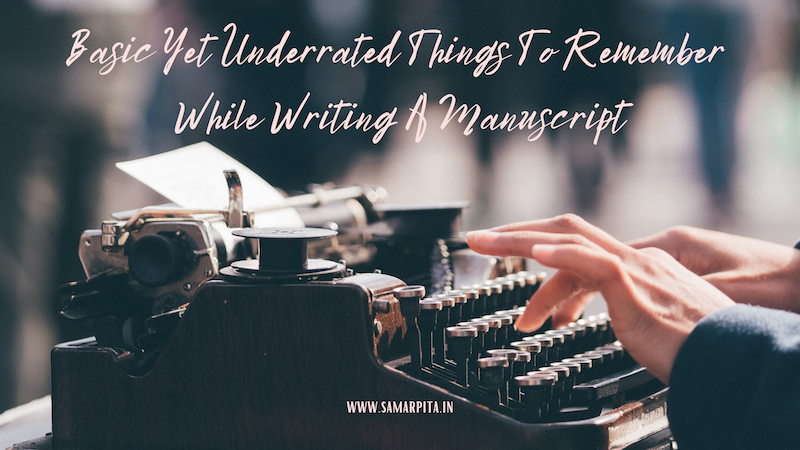You are bound to have a lot in your mind when writing the first draft of your manuscript. The story must be in a hurry to get typed, and you too must have a lot on mind. While typing, your first draft isn’t a time to go back and keep correcting errors. The priority at that time is to get the story from your mind to paper. Or, as it is these days, on MS Word. That brings me to the first point.
Use MS Word
Might seem extremely silly to most people reading this, but believe me when i say this, you’ll be surprised to know how this isn’t a basic for everybody. I have lost count of the number of people who have written their entire manuscript or even article/blogpost/thesis on Notepad, and then copy-pasted the entire thing to MS Word. What’s the big deal, you ask? Formatting becomes a nightmare and a lot of time is wasted correcting the document while typesetting. Please open a MS Word document and start typing your manuscript. All the best 🙂
Also read: The Hows & Whys Of Blogging For Your Business
Run a spell check
Again, a very basic piece of advice. Once you are done writing a chapter, run a spell check. You can also do this after the first draft is ready, but this step is crucial. Neither you, nor your editor should be wasting time in correcting basic spelling mistakes. A lot goes behind writing a book, and every minute counts. Spending hours correcting spellings will just tire you/your editor out.
Also read: Five Reasons Why Blogging Is Beneficial For YourBusiness
Know the use of basic features of MS Word
MS Word is one of the most important tools you will be using during the process of writing and editing your manuscript. It is important that you are aware of how to use the program, if not at an expert level, but at least at an intermediate level! I have known people who are unfamiliar with usage of options like track changes and comment box. These two are extremely crucial and your editor will expect that you know how to use and interpret them.
Also read: What Every Entrepreneur Must Know Before Starting On Her Own
Plan your chapters
Not a compulsory step, but it doesn’t hurt to do this. Sit and create a rough outline of your story and individual chapters. It is okay if you don’t know how the story will end. Begin slowly. Write outlines of the first five chapters and see how they expand. Accordingly, write outlines of the next five chapters before you begin writing the sixth chapter. This would help you stay focused and not lose track of the plot terribly.
Also read: Five Reasons Why Your Business Needs Content Marketing
Read what you have written
This is a constant suggestion I keep giving. Once you have written your manuscript, abandon it for 5-7 days and get it out of your system. Then, come back to it with a fresh mind and read it as a reader. Not as the author of the story. Read it as a critical reader and mark all the places the reader in you hated, loved, and also areas that you wanted to trash. Pay special attention to all three of these places, believe me, you’ll be seeing your story through a new pair of eyes!
I’m participating in #BlogchatterA2Z
If you are looking for an excellent manuscript editor, someone to create content for your business, or an expert to help build your personal or professional brand on social media, then look no further and connect with me at editor@samarpita.in I can be followed on instagram at @samarpita and on twitterat @samarpitadotin.



I missed one or two during my previous ms. Thanks for this post.
Such important points. Thank you for these.
These points seem absolutely basic, but strangely, there are many who do not follow them. Thank you for such a lucid post!